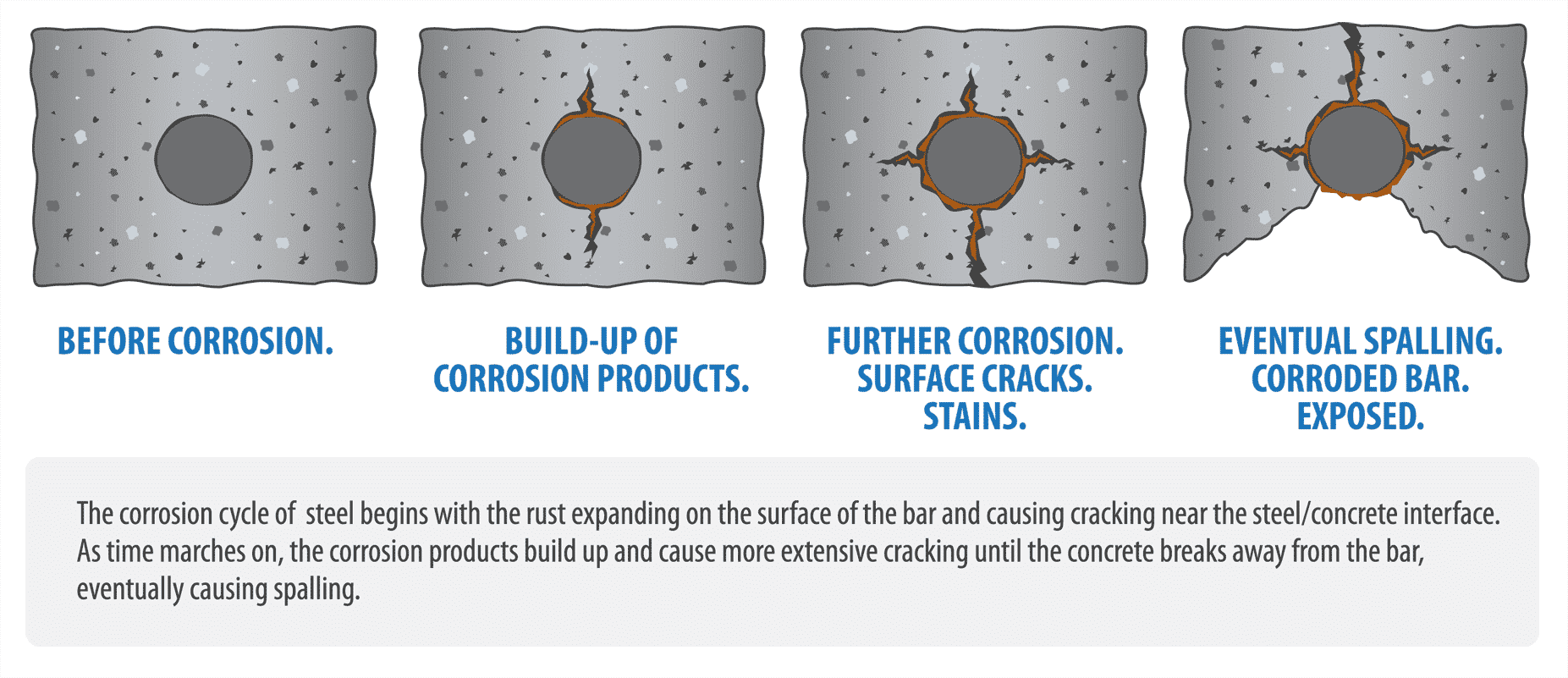What is Concrete Cancer? Understanding Causes, Signs, and Solutions
Concrete cancer is a significant issue that weakens and deteriorates structures over time. It happens when the steel reinforcement inside concrete rusts and expands, causing the surrounding concrete to crack and break down. Moisture and environmental factors, such as exposure to harsh chemicals, accelerate the process. If you leave the issue untreated, the damage can severely compromise the building’s structural integrity.
Causes of Concrete Cancer
Several factors contribute to the development of concrete cancer. These include:
-
Water Infiltration: When water seeps into the concrete, it causes the steel inside to corrode, which leads to cracks and weakening of the structure.
-
Environmental Exposure: In coastal areas, salt from the sea, along with deicing salts, accelerates the corrosion of the steel reinforcement. Additionally, harsh weather conditions can exacerbate the issue.
-
Poor Construction Practices: Improperly mixed concrete or failing to properly protect the steel reinforcement increases the risk of concrete cancer.

Signs of Concrete Deterioration
To detect concrete cancer early, watch for the following signs:
-
Cracks and Flaking: If you see cracks on the surface or notice flaking concrete, these could indicate underlying corrosion.
-
Rust Stains: Rust stains or discolouration on the concrete surface suggest that the steel reinforcement is corroding beneath the surface.
-
Structural Changes: Over time, you may notice that structural elements such as walls or floors start to sag or bow. This often signals that the concrete cancer is progressing.
How to Repair Concrete Damage
To repair concrete cancer, you need to follow a structured process. Here are the steps involved:
-
Assess the Damage: A structural engineer will inspect the affected area to determine the extent of the damage.
-
Remove Damaged Concrete: The next step is to remove the concrete surrounding the corroded steel. This exposes the underlying issues and allows for proper treatment.
-
Treat the Steel Reinforcement: Afterward, clean and treat the rusted steel to prevent further corrosion and damage.
-
Rebuild the Structure: Once the steel has been treated, pour new concrete to restore the structural integrity. Often, workers add additional reinforcement for extra strength.
-
Seal and Protect: Finally, seal the repaired area to prevent moisture from infiltrating and causing further damage.
Preventing Concrete Deterioration
Preventive measures can significantly reduce the risk of concrete deterioration. To protect your structure, consider the following:
-
Use Corrosion-Resistant Materials: Opt for durable, corrosion-resistant concrete and steel to provide better protection against deterioration.
-
Waterproof the Surface: Sealing the concrete surface prevents moisture from penetrating and causing corrosion.
-
Ensure Proper Drainage: Proper drainage around your building prevents water from collecting near concrete surfaces, reducing the risk of concrete cancer.
-
Conduct Regular Inspections: Regular inspections by a professional can identify early signs of damage before they escalate into more significant problems.
Conclusion
Although concrete cancer is a serious issue, you can minimize its impact with early detection and proper repairs. By addressing problems promptly, you can maintain the safety and longevity of your building. If you notice any signs of concrete deterioration, consult with a professional immediately. Timely repairs, combined with preventive measures, will ensure the continued safety and strength of your structure.
Elite Australian Engineers specialize in diagnosing and treating concrete cancer. Contact us today to learn how we can protect your property from further damage.


No responses yet